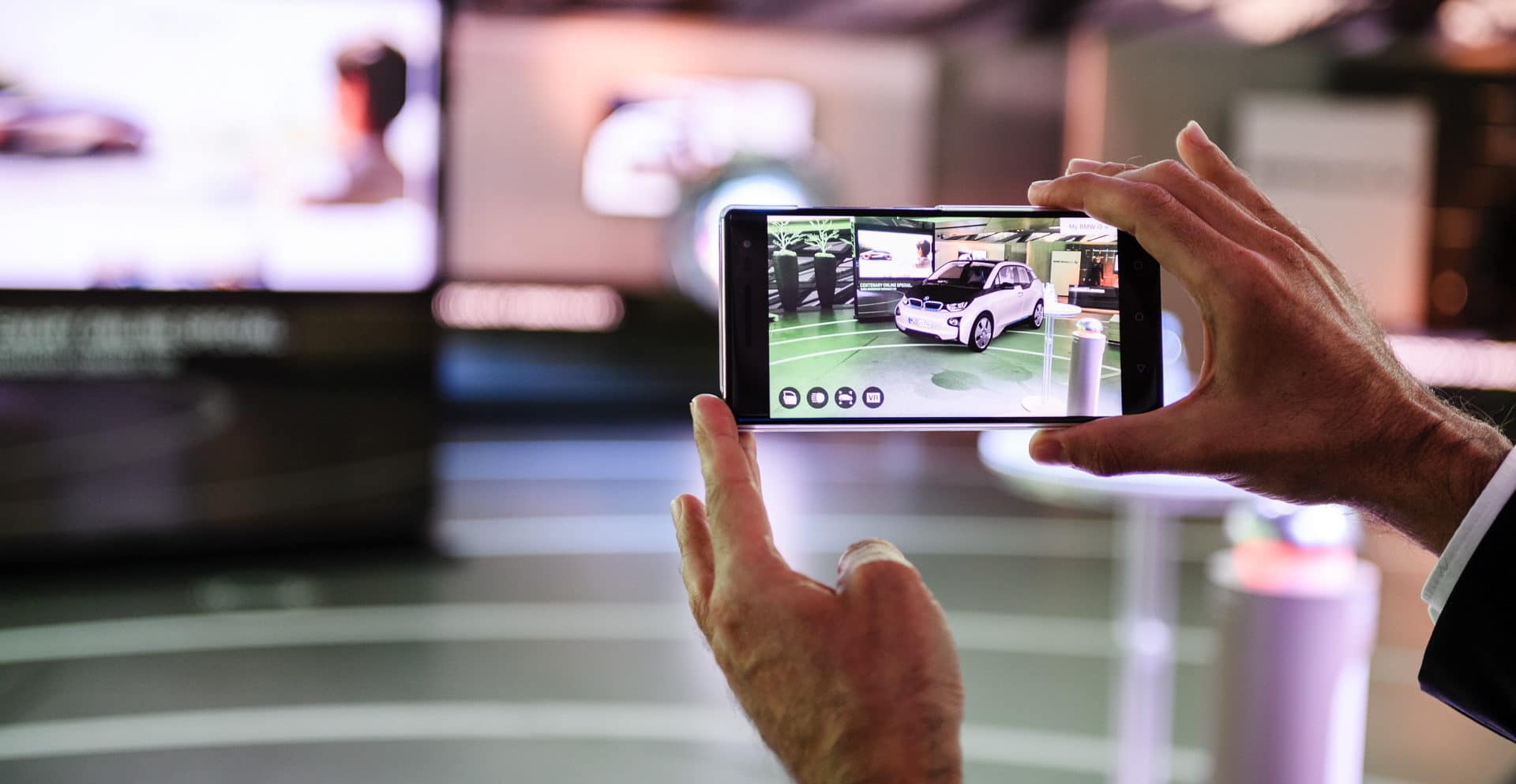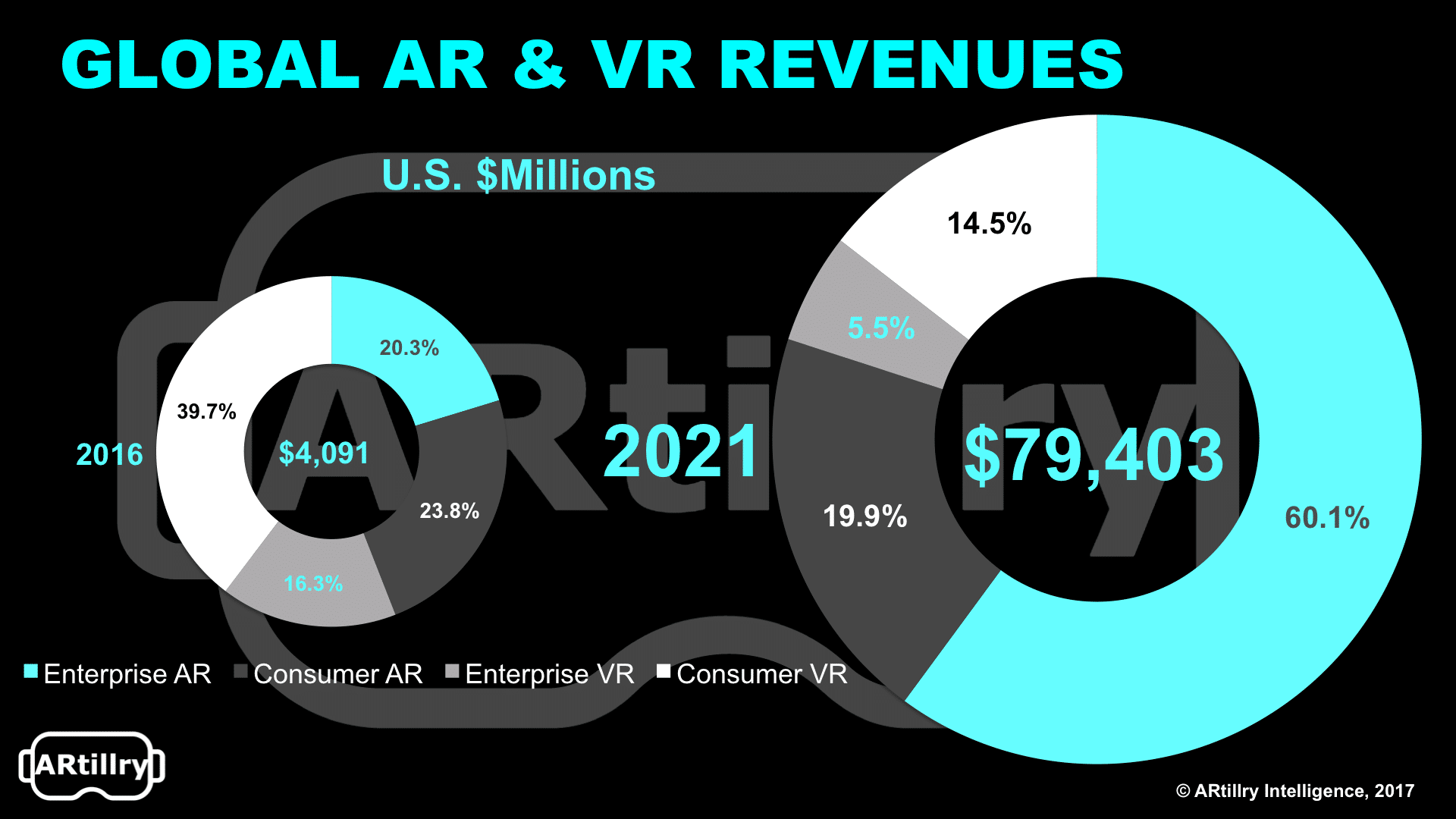
Back in October, a seldom-discussed event started to raise an important question about AR’s geographic boundaries. A group of artists digitally “vandalized” Snap’s AR overlays of Jeff Koons sculptures throughout Central Park.
They didn’t hack Snap servers to vandalize the graphics within Snapchat’s UI, but rather recreated and vandalized a separate static image. The act was nonetheless to illustrate a point that public spaces shouldn’t be an open canvas for private companies to affix AR graphics.
The question this raises is, ‘Who owns augmented realities?’ Ultimately AR graphics aren’t happening in public spaces but in app renderings of those spaces. So it’s not an issue of public domain, because anyone uninterested in specific AR graphics can simply not use those apps.

Scarce Resource
But the larger concept this all leads to is scarcity. As already examined by the always-insightful Matt Miesnieks, scarcity could be a source of value in AR. This is because the geography that defines some AR graphics’ mapping and localization renders them relatively finite.
Geographic positioning for graphical overlays will be done mostly to add value in the form of location-based relevance (e.g. nearby commerce, reference, local pride/emotion). But an important byproduct of that localization will be to create limitations through geographic scarcity.
This contrasts the digital real estate that’s flooded and devalued lots of content in the consumer internet and smartphone eras. Banner ads for example have been commoditized by expanding ad networks and fill rates, thus driving down CPM value (and ad effectiveness).
Grounding digital assets in physical world relevance conversely adds value that can be analogous to the location-based and temporal relevance of a live event. Its boosted by aggregate interest in a specific time and place that’s bound by finite atoms rather than infinite bits.
Pokemon Go has already tapped into this concept, as has its forbear Ingress. And consumer AR apps developed in the coming months will likely find similar value in geographic and temporal scarcity. After all, this principle is fitting to AR’s inherent melding of the digital and physical.

Alternate Realities
Though AR can engender location-based scarcity, it should be noted that geographic positioning is only exhausted on a per-app level. More apps can mean less scarcity. And even within the same app, there can be layers and filters (such as a social graph) for geo-tagged content.
But it still raises important concepts that could determine future dynamics, business models and even regulation around AR. We’ll see IP issues over content ownership when shared in AR, as well as privacy filters or content-targeting that govern what can be seen when, and by whom.
“What happens in a world where everyone may be perceiving a different reality?” Niantic CEO John Hanke asked during a panel discussion at the GamesBeat Summit in May. “All of a sudden this fundamental thing of a shared reality is not shared anymore. How do you design for that?”
But the concept still remains that there’s an opportunity to create greater value through scarcity, when compared to the devalued spatial inventory that’s erstwhile defined the digital age. The question, and the exciting part, is what consumer AR products and business models will develop.
For a deeper dive on AR & VR insights, see ARtillry’s new intelligence subscription, and sign up for the free ARtillry Weekly newsletter.
Disclosure: ARtillry has no financial stake in the companies mentioned in this post, nor received payment for its production. Disclosure and ethics policy can be seen here.
Header image credit: Snap, Inc.

